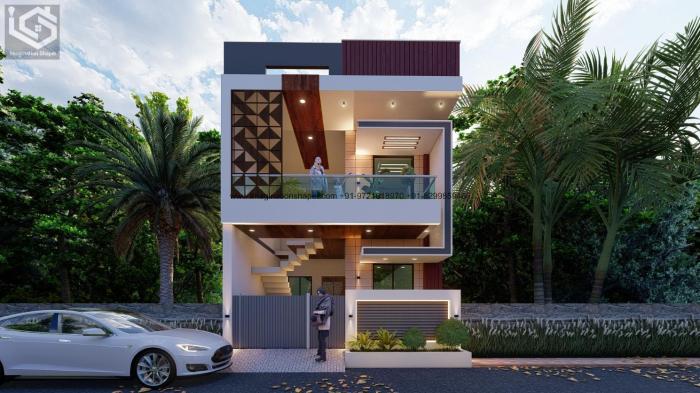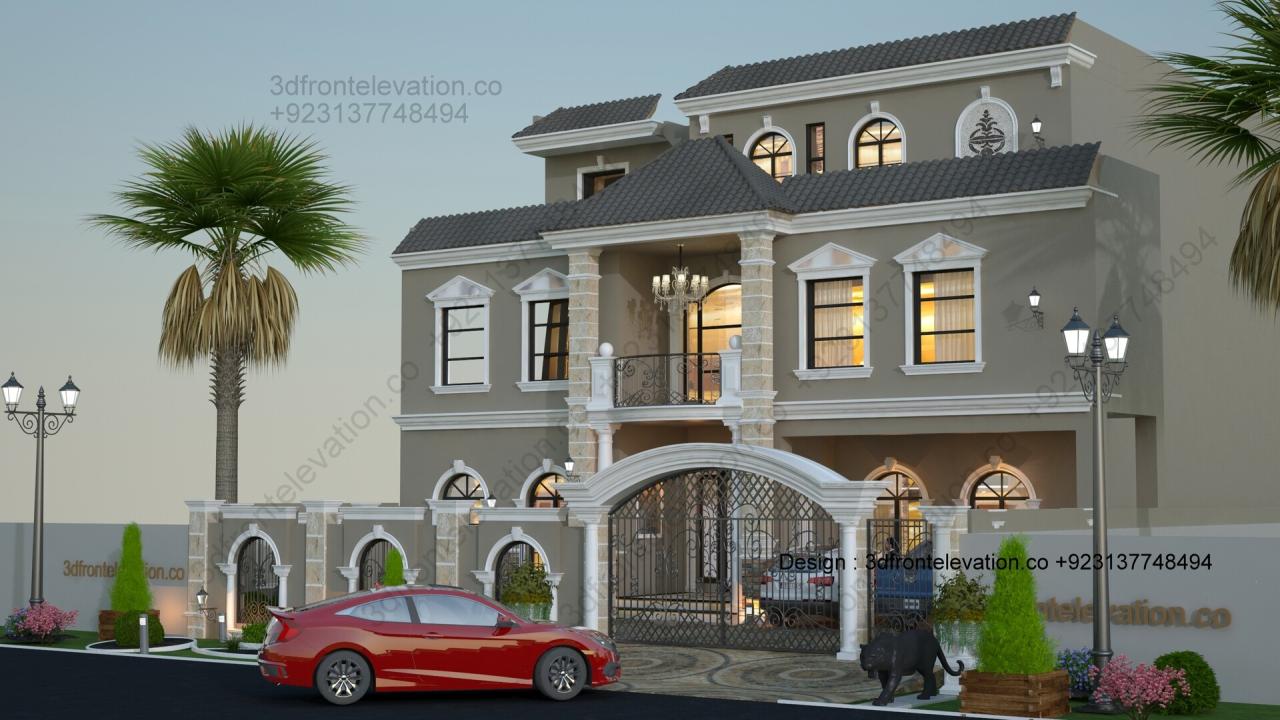Unveiling the Magic of Front Design
Front design serves as the gateway to a world of creativity and innovation, shaping the first impression of a product with precision and flair. Let's embark on a journey to explore the essence of front design, uncovering its impact on user experience and product success.
As we delve deeper into the intricacies of front design, we will unravel the key elements that define its effectiveness, from color schemes to typography choices, and examine the latest trends that are reshaping the landscape of design across various industries.
Overview of Front Design

Front design plays a crucial role in various industries, ranging from technology and automotive to fashion and interior design. It refers to the visual appearance and layout of the front part of a product or application, which is the first thing users interact with.
In technology, front design is evident in the user interface of websites, mobile apps, and software programs. A well-designed front end can enhance usability, navigation, and overall user experience. For example, intuitive navigation menus, appealing color schemes, and interactive elements are key aspects of front design in technology.In the automotive industry, front design is prominent in the exterior styling of cars, trucks, and motorcycles.
The front grille, headlights, and bumper design not only contribute to the aesthetics of the vehicle but also affect aerodynamics and functionality. Iconic examples include the signature front grille of BMW cars or the distinctive front fascia of a Lamborghini.In fashion, front design is essential in clothing, accessories, and footwear.
The front of a garment or accessory often features unique patterns, textures, and embellishments that define the brand's identity and appeal to consumers. From intricate embroidery on a blouse to bold logos on a handbag, front design influences purchasing decisions and brand loyalty.Overall, front design plays a significant role in attracting and retaining customers, enhancing brand recognition, and setting products apart from competitors.
A well-executed front design can create a strong first impression, build trust with users, and ultimately drive the success of a product in the market.
Elements of Front Design
Effective front design encompasses several key elements that work together to create a visually appealing and user-friendly interface. These elements include color schemes, typography choices, and layout and spacing.
Color Schemes
Color schemes play a crucial role in front design as they can evoke certain emotions, set the tone of the website or application, and create visual hierarchy. A well-chosen color palette can enhance user experience, guide users' attention, and convey brand identity effectively.
It is essential to select colors that complement each other and ensure readability and accessibility for all users.
Typography Choices
Typography choices, such as fonts, font sizes, and font styles, greatly impact the overall look and feel of front design. The right typography can improve readability, establish hierarchy, and reflect the brand's personality. It is important to consider legibility, consistency, and alignment when choosing typography to ensure a cohesive and professional appearance.
Layout and Spacing
The layout and spacing of elements on a front design can significantly affect usability and visual appeal. A well-structured layout guides users through the content, highlights key information, and creates a sense of balance. Proper spacing between elements improves readability, reduces clutter, and enhances the overall user experience.
It is crucial to maintain consistency in layout and spacing to create a harmonious and organized design.
Trends in Front Design

Front design trends are constantly evolving across various industries, influenced by technological advancements and changing consumer preferences. Let's explore some of the current trends in front design and how they have transformed the way businesses present themselves to the world.
Traditional vs. Modern Front Design Approaches
Traditional front design often focused on static elements like logos, colors, and typography to create a cohesive brand image. In contrast, modern approaches incorporate interactive elements, animations, and responsive design to enhance user experience and engagement. The shift towards minimalistic and clean designs reflects a more user-centric approach in modern front design.
Technological Advancements in Front Design
Technological advancements have revolutionized front design by enabling dynamic content, personalized experiences, and seamless interactions
Innovative Front Design Trends
Micro-animations
Subtle animations like loading spinners, hover effects, and scrolling transitions add a touch of interactivity to front designs.
Dark mode
Dark mode has gained popularity for its sleek and modern appearance, reducing eye strain and enhancing readability.
3D elements
Incorporating 3D elements like illustrations, icons, and product visuals creates a more immersive and engaging user experience.
Voice user interface (VUI)
With the rise of smart speakers and voice assistants, front designs are adapting to accommodate voice interactions for a hands-free experience.
Sustainability-focused design
Eco-friendly design practices, such as using recycled materials, energy-efficient technologies, and green color schemes, are becoming prevalent in front design to reflect a commitment to environmental responsibility.These innovative trends in front design demonstrate the importance of staying updated with the latest technologies and design practices to create memorable and impactful user experiences.
User Experience and Front Design
User experience (UX) plays a crucial role in front design as it focuses on creating a seamless and enjoyable interaction for users visiting a website or using an application. Front design encompasses the visual elements and layout of a digital interface, which directly impacts how users perceive and engage with the product.
Enhancing User Experience through Front Design
Front design can enhance user experience by incorporating intuitive navigation, clear information hierarchy, visually appealing elements, and responsive layouts. By prioritizing user needs and preferences, front design can create a more engaging and user-friendly interface that encourages users to explore and interact with the product.
- Intuitive Navigation: Easy-to-use navigation menus and interactive elements guide users through the interface, making it effortless to find the information they need.
- Clear Information Hierarchy: Organizing content in a logical and structured manner helps users understand the relationship between different elements on the page.
- Visually Appealing Elements: Using appropriate colors, typography, and imagery can create a visually appealing interface that captures users' attention and enhances their overall experience.
- Responsive Layouts: Designing front layouts that adapt to different screen sizes and devices ensures a consistent experience for users across platforms.
Best Practices for User-Friendly Front Designs
Creating user-friendly front designs involves following best practices that focus on usability, accessibility, and user engagement. Some key practices include:
- Conducting User Research: Understanding user behaviors, preferences, and pain points through research helps in designing interfaces that meet user needs.
- Implementing Usability Testing: Testing the front design with real users helps identify usability issues and gather feedback for improvement.
- Prioritizing Accessibility: Ensuring that the front design is accessible to users with disabilities by following accessibility standards and guidelines.
- Consistent Branding: Maintaining a consistent brand identity throughout the front design creates a cohesive and recognizable experience for users.
Successful Front Designs Prioritizing User Experience
Examples of successful front designs that prioritize user experience include:
- Apple: Known for its minimalist and user-friendly interface across products, Apple prioritizes simplicity and intuitive design in its front layouts.
- Google: Google's front design focuses on clean aesthetics, fast loading times, and user-centric features that enhance user experience.
- Airbnb: Airbnb's front design emphasizes user-generated content, personalized recommendations, and easy booking processes to create a seamless user experience.
Final Thoughts
In conclusion, front design emerges as a cornerstone of product aesthetics and user interaction, blending artistry with functionality to create unforgettable experiences. With a keen eye on innovation and user-centric designs, the future of front design holds endless possibilities for captivating creations.
Helpful Answers
What role does front design play in user experience?
Front design significantly impacts user experience by setting the tone for interaction and guiding users through the product interface.
How can color schemes influence front design?
Color schemes in front design evoke emotions, create visual hierarchy, and convey brand identity, enhancing the overall aesthetic appeal.
Why is typography important in front design?
Typography choices in front design affect readability, visual impact, and brand perception, contributing to the overall user experience.